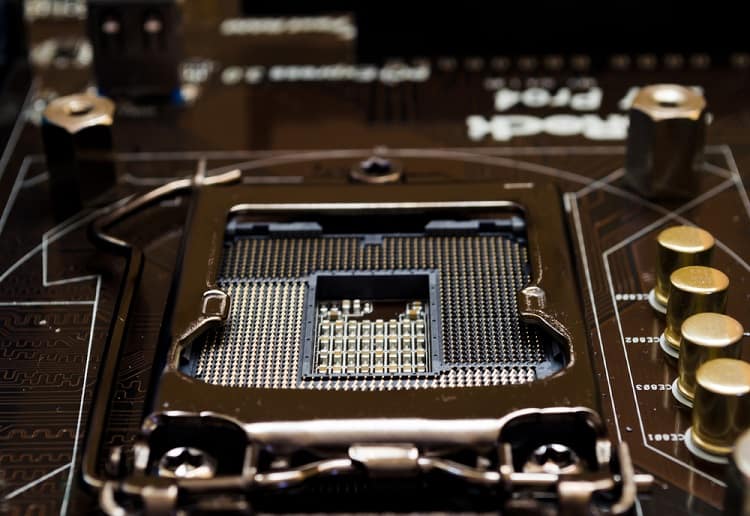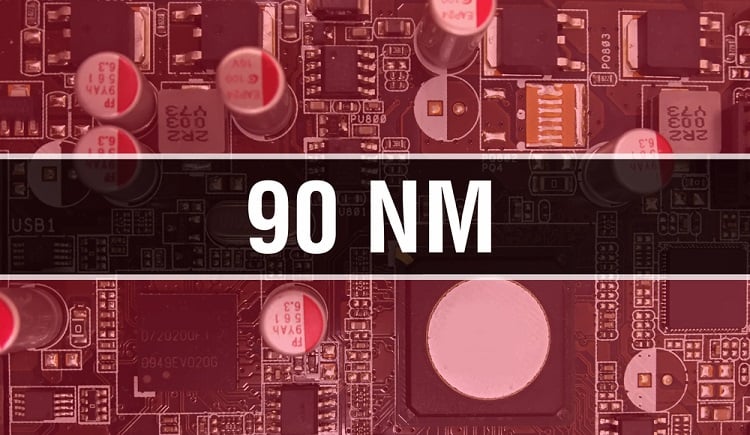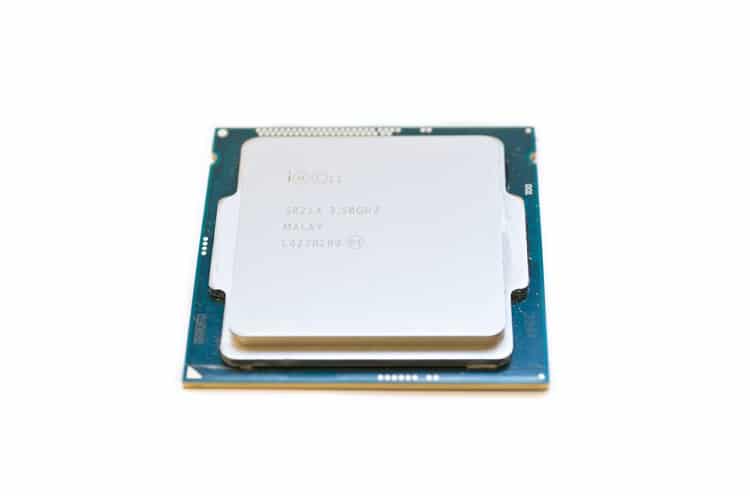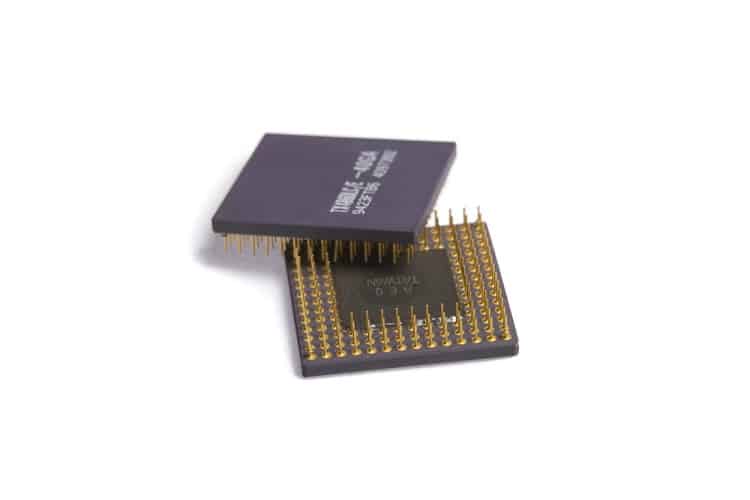- Front Case Fan Not Spinning: [3 Proven Fixes That Work - June 22, 2022
- Is 60 Degrees Celsius Hot For A CPU In 2022? [Must-Read] - June 7, 2022
- How To Handle CPU Temps Jumping: A Definitive Guide [2022] - June 2, 2022
Does CPU NM matter? Yes, it does. You can measure the size of transistors on a processor in nanometers. The smaller the size, the more transistors can fit onto the processor.
That also means electrons can travel between transistors quicker. The end result is smaller NM processors function faster.
There is a range of other advantages that a low CPU NM brings to a processor. We’ll be covering them in more detail in this article.
We’ve also broken it down into useful questions so that you can learn the most important details about CPU NM.
Once you know the importance of CPU NM and how to judge it, you’ll be able to compare processors more effectively. Computer components are also becoming ever more sophisticated.
That means knowing the finer details is becoming much more beneficial.
In this article, I’ll make sure you know them.
Contents
What Does The “NM” Really Mean?
A CPU’s NM refers to the transistor density in nanometers. Nanometers are among some of the smallest measurements in the universe. The human eye can only see objects as small as 100 micrometers.
And a single micrometer contains 1000 nanometers. Despite how tiny differences in nanometers are, they affect processors in many ways.
Why Does CPU NM Matter On CPUs?
The smaller the NM size of a processor, the more beneficial it is. Some advantages include:
- Lower power usage
- Reduced thermal output
- Less heat dissipation (important if you play intensive server games such as Minecraft. Check out some Minecraft CPUs here.)
- Smaller die size

Through these advantages, costs get reduced when the NM size is smaller. Not only that, transistor density increases too. Because of that, more cores can fit onto each chip.
Various smaller sizes have become common, including 14nm and 7nm. But ultra-small sizes like 3nm will hit the market soon.
You can also read our guide “Does CPU Limit SSD” in order to gain more insights on the topic.
How Exactly Do NM’s Work In A CPU?
A CPU chip, in simple terms, is a kind of wafer. It’s a thin slice with circuitry and transistors. The NM size of the CPU chip will impact how thin that wafer is.
The thinner it is, the more efficient it is, and the easier it is to keep cool.
Some buyers of CPUs look for ones they can overclock safely without overheating them. Ones with a small NM measurement get picked because they consume less power to keep cool.
We’d recommend those if you intend to play cutting-edge games or do complex tasks.
Is More NM Better On A CPU?
No, it’s not. Older processors used to have NM figures as high as 800nm, but that was back in the 1980s. These processors were inefficient, using lots of power.

They also weren’t very powerful. No modern programs would run on them.
Over time, they’ve slimmed down to sizes like 14nm, 10nm, 7nm, and 5nm. There are even rumors that 1nm CPUs will be commonplace by 2030 or sooner.
Is Higher Or Lower NM Better?
If you’ve ever wondered ‘does CPU NM matter?’, it’s worth looking at the recent history of CPUs. Since 2014, they have varied from 14nm to 5nm.
3nm processors will soon join that list, like we’ve mentioned. According to Moore’s Law, the number of transistors on a chip doubles every two years.
That trend has been very reliable. There are alternative ways of measuring processor power, but Moore’s Law is one.
All the processors with the highest speeds are smaller NM processors. That means lower NM is better.
Why Is A Small NM In A Processor Better?
If a processor contains a lower NM figure, that’s immediately a sign that it’s modern and advanced.

The latest 5nm processors entered the market after 2020. 3nm processors are on the way very soon, and 2nm processors should arrive in 2023.
But it’s not only a sign of how modern they are. With more transistors packed onto smaller NM processors, they’re more powerful too.
Why Were Specific NM Numbers Chosen?
It’s mistaken to assume companies chose NM numbers for specific manufacturing reasons. We’ve looked into the processes behind CPU manufacturing.
Often they’re picked by marketing departments or chosen as predictions. That means they’re sometimes off the mark. You can see an in-depth explanation in this YouTube video.
But generally, they’re a good way to separate obsolete processors from modern ones. Despite not measuring the physical aspects of CPUs, they do measure transistor density.
Does NM Increase Performance?
If the NM figures for a processor are high, then that will mean larger transistors and a thicker chip wafer. Both of these are detrimental to performance.
This is because performance requires speed, and speed requires smaller transistor sizes.
Smaller sizes allow electrons to pass across them quicker. That increases the processor speed. Thinner processor wafers are more suitable for overclocking, too, as that also reduces thermal output.
What Is The NM Limit For CPUs?
The NM limit tends to evolve as new technologies and innovations appear on the market. But there are already problems even with 5nm processors.

Complicated quantum effects are causing challenges in manufacturing.
These will take time to surmount, and different chip manufacturers have got different approaches. But over time, the NM sizes have declined dramatically.
I found an article featuring some CPU transistor technology innovations that is good for extra reading.
FAQs
Is 7nm Better Than 14nm?
A 7nm CPU features transistors half the size of a 14nm CPU. But that doesn’t mean its performance will be double. It depends on what data the manufacturer is using to claim their chip is a specific size.
Plus, sometimes chips with different NM figures are similar in other ways. But most of the time, the 7nm chips will be better.
Is 8nm Better Than 12nm?
This is like the above question, but the two NM figures are closer together. The performance difference will be present, but not quite as noticeable. To add some clarity, the 14nm process emerged in 2014 and the 7nm process in 2018.
This means 8nm and 12nm processors fall between those 4 years. Not a massive amount changes in computing power over 4 years, so the difference is harder to discern.
Is A 2nm Chip Possible?
Yes, and from what we’ve seen, production will be starting on 2nm chips very soon. TSMC says it will be installing production equipment for 2nm processors in 2023.
Intel’s roadmap is 2024 at the earliest. It depends on technological development, equipment installation and chip manufacturing.
Is A 1nm Chip Possible?
At 1nm, even more serious problems emerge than are present with 3nm and 5nm chips. A silicon atom is 0.2-0.3 nanometres wide, meaning transistors wouldn’t be that much larger than a few silicon atoms. The connection traces between the transistors would likely be only 1 atom wide. Whether this can be overcome effectively depends on manufacturers.
Some advanced workarounds are available for chip manufacturers like Intel, Samsung, and TSMC. But there are rumors that 1nm chips could break Moore’s Law. This is because transistors can only get so small before hitting a physical limit.
There are also cost concerns, as the development cost for CPU chips soars the smaller the NM size is. One estimate put the cost of 7nm chips at just under $300 million and almost $550 million for 5nm chips.


![How To Know If CPU Is Dead? [A Comprehensive Guide 2022] How To Know If CPU Is Dead? [A Comprehensive Guide 2022]](https://maximum-tech.net/wp-content/uploads/2022/04/How-To-Know-If-CPU-Is-Dead-150x150.jpg)
![Does CPU Matter For Streaming In 2022? [A Definitive Guide] Does CPU Matter For Streaming In 2022? [A Definitive Guide]](https://maximum-tech.net/wp-content/uploads/2022/05/Does-CPU-Matter-For-Streaming-150x150.jpg)
![How To Change CPU Fan Speed Without Bios? [Easy Guide] How To Change CPU Fan Speed Without Bios? [Easy Guide]](https://maximum-tech.net/wp-content/uploads/2022/05/How-To-Change-CPU-Fan-Speed-Without-Bios-150x150.jpg)
![Best CPU for Minecraft In 2022 [7 Worthy Picks Reviewed] Best CPU for Minecraft In 2022 [7 Worthy Picks Reviewed]](https://maximum-tech.net/wp-content/uploads/2022/04/best-cpu-for-minecraft-150x150.jpg)

![Best CPU Under 0 - An EPIC Buying Guide [2022] Best CPU Under 0 - An EPIC Buying Guide [2022]](https://maximum-tech.net/wp-content/uploads/2022/02/best-cpu-under-300-150x150.jpg)